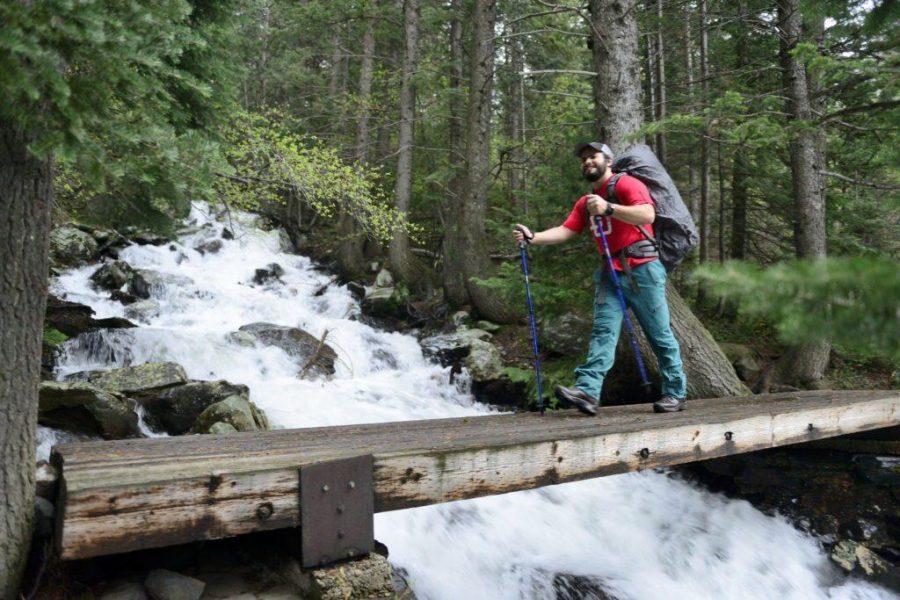Have you retrieved your hiking boots out from underneath your ski boots yet? It’s that time of year when you should, as the snow begins to thaw from the trails in the Wasatch Front. Each day the hiking trails begin to emerge as the sun warms their meandering paths, and the leaves on the trees transition from brown to green.
Hiking opportunities in this weather are endless. There are so many local hiking trails that you could go on a new hike every day, continuously exploring new territory. The canyons that are adjacent to the Salt Lake Valley are the perfect place to begin. Each canyon has streams and rivers, resulting in a luscious fern bed full of life and moisture.
One trail that you can visit just 30 minutes from the University of Utah is up Millcreek Canyon. The gate four miles up the canyon will open in July, and won’t close until November. Seven and a half miles past that gate you will come across 1000 Springs, one of the natural springs in Millcreek Canyon. Beneath the Springs, there is a pond that is home to a family of beavers. If you are lucky when you are hiking along the road you’ll see one working on a dam.
Another beautiful hike in Millcreek Canyon is the Pipeline Trail. Beginning approximately half-way up the canyon, you are actually walking along an old pipeline trail. The overlook at the end puts you in the perfect location to view Salt Lake in the distance.
To the South is Neff’s Canyon. Neff’s Canyon is very steep but has a multitude of hikes for every level. You are hiking just north of the magnificent Mt. Olympus and it has impeccable views of Salt Lake City. There is even an old cave that you can hike past called Neff’s Cave — one of the deepest caves in North America. Don’t worry about falling in, though, as the entrance has been blocked off. Instead, you can use a flashlight to stare into the abyss to satisfy your curiosity. Continuing up the canyon you’ll have a view over the top of Grandeur Peak as well as passing the Mount Olympus Spring. Dogs are allowed up the canyon, so don’t forget to bring a water filter if you want to enjoy some of the fresh spring water.
Continuing south, the next two large recreation canyons you’ll reach are Big and Little Cottonwood Canyon. Each canyon has their own unique hikes and adventures. Since the two were formed by different forces — river and glacier erosion respectively, the canyon walls vary drastically in steepness. Big Cottonwood Canyon offers many hikes that are about the same steepness in ascent from the beginning to end, whereas Little Cottonwood typically has very steep beginnings that taper off once you reach the high mountainous valleys. The views at the tops of both will keep bringing you back for more.
These options are good anytime, but particularly for spring weather. If you find yourself available for a hike on a more summer-like day, some hikes that you should definitely put on your list are Lake Blanche, Lake Mary, Twin Lakes, Cecret Lake, and Red and White Pine Canyons.
These hikes give you the opportunity to reach far-off peaks if you so desire, but will also allow the inexperienced hiker to practice their skills.
No matter where you go now that snow is a little less common in the weather forecast, remember to use the buddy system and never hike alone. At the very least be sure that someone always knows where you are.



